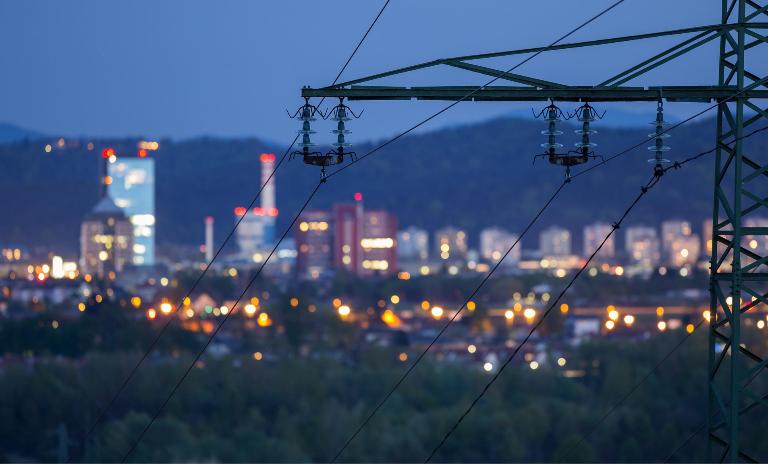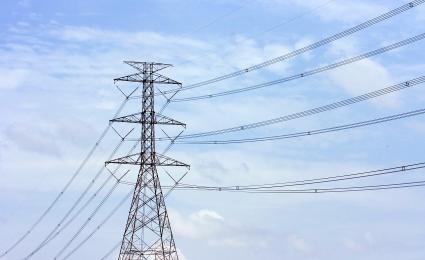Energy storage is set to experience a growth spurt over the coming years. But fundamental questions remain for developers, utilities, suppliers and investors.


Designing the adaptable grid
How the adaptable grid can help electric power companies master the challenges of the next decade
The stakes are high for the adaptable grid. Over the next decade it will become a source of competitive advantage in the race to decarbonization and resilience, and power companies must rapidly and effectively manage the transition.

Around the world, electric power providers are accelerating their efforts in mitigating climate change. Many have plans to decarbonize, and to substitute renewable power for fossil generation. But what does that mean for the power grid: the transmission and distribution network that brings electricity to consumers? How will decarbonization influence the topology of the grid, the technology that underlies it, and the management of the companies that provide it?
The next ten years will be unusually challenging for this industry. Already, there are signs of the instability to come. In January 2021, the synchronous power grid that stretches from Spain to Turkey in Europe split in two, compelled by sudden frequency fluctuations. About 200,000 homes lost power.
The companies that build and maintain the industrialized world's grids are just now grappling with the same urgent challenge: how to maintain a safe, affordable power supply for an increasingly electricity-dependent population – while enabling an unprecedented, economy-wide decarbonization of the power system at the same time. The answer involves designing and deploying an adaptable grid. This is a grid that can withstand multiple challenges at once, including the unforeseen. It will take advantage of current advances in sensors, analytics, communications, and next generation electronics.
For most power companies, the question is no longer whether to accept the adaptable grid. It’s how rapidly and effectively they can manage the transition. This bold new approach to power supply and distribution will need to be well established by the end of this decade – if not earlier – given the many challenges the grid faces. It will take a few years to fully develop, and the time to start working on it is now.
Getting Used to Unpredictability
The changes associated with decarbonization and digital technology are making the future of electric power more unpredictable than it has been since the 19th century. Global electricity demand is projected to grow by 25% by 2030, and maybe more. The drivers of demand include rising living standards around the world; the rapid digitization of industry and finance, including power-hungry cryptocurrencies; the production of hydrogen fuel and other innovative uses of electricity; and the provision of electricity to provide heat for residential and industrial applications (such as electricity-driven heat pumps for residences, replacing natural gas).
In addition, as electric vehicles (EVs) appear en masse towards the middle (Europe) and end (US) of the decade, they will require significant grid upgrades. Fleets of electric trucks, buses and heavy-duty equipment will require expensive power grid upgrades to enable fast charging. Other forms of demand will also increase, and in harder-to-predict ways. For instance, if remote work becomes a permanent way of life, peak electricity times may no longer follow a 9-to-5 timetable.
On the supply side, the stability of the grid is threatened by several factors related to the shifting mix of power sources . Renewable energy resources like photovoltaics and wind turbines now provide lower cost energy than traditional fossil generation. But the power they supply is intermittent, often surging or ebbing at unpredictable times (like when the wind dies down). This variability increases risk. There are many reminders of the system's continuing reliance on fossil-fired (GHG-emitting) power generation, even as renewable energy sources proliferate. For example, the figure below depicts the windless cold snap that settled over the wind energy-rich Midwest earlier this year. What would have happened to power supply and prices in the absence of gas-fired plants?
Distributed energy resources (DERs) add still more complexity, by generating a bidirectional flow of electricity between homes and buildings and the grid. The same buildings continuously shift between producing, storing, and consuming electricity. In some neighborhoods, a large percentage of customers will soon have installed two or more DERs, including roof-mounted photovoltaics, battery-based energy storage systems, and perhaps EVs. Most of these devices will connect to the grid through inverters. In the past, the inertia of rotating machines like electric turbines has helped stabilize voltage and frequency in the grid. Inverters do not provide that kind of counterforce. All of this increases the risk of grid instability, often in subtle ways that may be difficult to detect.
Another wildcard for power companies is the effect of climate change itself. Acute weather shocks such as floods, tsunamis, hurricanes, tornadoes, and unseasonable waves of heat and cold will appear more frequently. More incremental but chronic changes in weather patterns will also stress the grid: increasing heat stress, reducing reliability, diminishing renewable resources, and establishing permanent wildfire seasons in some populated regions. Finally, the recent record of cyberattacks suggests that many of these problems could be triggered not just accidentally, but deliberately.
In summary, the grid faces a growing array of challenging events, from hurricanes to power stability problems. It will need to respond with ever-greater speed to avoid greater catastrophe, especially as we become increasingly dependent on electricity for our digital economy and for transportation.
The Evolution of Grid Design
Addressing these issues will require significant changes – in the grid itself and the way it is planned and managed. As shown in Exhibit 2, many electric utilities have already installed centralized automated systems, typically during the grid modernization programs of the past two decades. These systems can detect anomalies and respond rapidly, notifying human decision makers after the fact.
Automated central control systems have been reasonably effective so far at handling the voltage and frequency shifts typical of today's grid. But they cannot adequately address the challenges facing utilities going forward. The technology underlying the adaptable grid needs to be reliable, affordable, and modular: with autonomous local “mini-micro-nano-grids” that can, if necessary, operate as an autonomous "island." These modules must be able to handle unpredictable and potentially severe shocks to the power system. They must respond rapidly to these shocks, initiating automatic quarantines that isolate troubled areas so they don’t “infect” the rest of the grid. And they must perform these more complex tasks without sacrificing safety, reliability, or affordability.
To make the adaptable grid work, changes in management will also be needed: the deployment of technology, the topology of the grid, the planning process, and the paradigms of internal oversight and government regulation. As the prevailing model shifts to modular systems, more local control, process automation, and self-awareness will be built into the infrastructure – and into the organizations that oversee it. The digital advances needed for this new infrastructure are not yet ready; a major new R&D effort will probably be needed.
Adapting to meet the next wave of challenges
Electric power utilities (and their regulators) will need to make these critical moves during the next few years:
Technology
Apply advanced digital technology to the grid, including artificial intelligence, sensors and other data sources, predictive analytics, edge computing, and communication technology. Take on new suppliers as needed. Experiment first in representative demonstration projects, and then scale up.
Intensify cyberattack protection. Despite all the efforts made in cybersecurity, a successful ransomware attack on the grid is still possible. This would endanger many lives and cause trillions of dollars of lost value. Integrate cybersecurity into every aspect of operations.
Monitor grid activity with “digital twins” and other real-time simulations. Learn from every case and continually improve your internal oversight and risk management.
Support fundamental R&D, partnering with industry and government to accelerate the development of critical path technologies, especially for foundational capabilities (for example, ultra-low latency.) See the figure below on promising emerging grid technologies that deserve attention.
Topology of the Grid
Update grid assets. Replace older transformers and substations with solid state devices. Replace conventional meters with smart panels and intelligent service points. And enlist highly targeted – in space and time – demand management to complement grid assets.
Design for economies of scale and diverse system needs. Design for economies of scale and diverse system needs. Each neighborhood is different, but cost, safety and equity all benefit from standardized technology. Bring down costs and reduce complexity by sharing a single customer interface and other IT capabilities across the entire system. But complement those more centralized systems with local hardware and software combinations (and edge computing in some cases) that address the specific needs of each geography. A residential neighborhood, a manufacturing district, and a rural town all have different electrical requirements, requiring grid designs that match their needs.
Build resilience (redundancy and flexibility) into the grid design. Use AI to augment human intervention during disruptions, when decisions must be made in milliseconds. Use DER resources to manage the grid. Establish robust modernization initiatives, designed to adapt to unpredicted events, and to be upgradable as needed.
Planning and Management
Adopt modular decision making. Move much of the system’s computing power and accountability to the edge, away from central control. This involves both breaking down highly complex - time consuming – grid optimization problems into more discreet, tractable tasks. And simply physically locating the computing power necessary to make instantaneous control decisions closer to the equipment to be managed.
Take a less deterministic approach to planning. Redesign the process to proactively identify challenges, especially those that will require time to address.
Develop your forward-looking radar for risk and opportunity. Improve your understanding of where, when, and how your customers will adopt DERs, load control, and electric vehicles. If you know demand will rise over the next 10 years in a neighborhood, and permits for new transmission require several years, start the paperwork now.
Reorganize your staff away from asset-defined functions to more integrated teams that can manage all of these changes effectively with accountability.
Oversight and Regulation
Educate regulators and other public stakeholders. Emphasize the value of the adaptable grid and how it can help realize other regulatory priorities. The European Union, for example, recently proposed making power utilities more explicitly liable for damages inflicted on equipment or the land by outages, surges, or fires. The adaptable grid will help power companies manage this new level of accountability.
Design the grid to respect your diverse mix of communities. Every locality has distinctive economic and social needs. For example, those with multi-family dwellings may need you to set up public charging stations for EVs. They may also need better infrastructure for electric bus lines and ride-sharing services that provide mobility for people without cars.
The stakes are high for the adaptable grid. Over the next ten years it will become a source of regional competitive advantage, especially in light of the need for decarbonization and resilience. Businesses and employees will move to locations – urban or rural – that can provide low-cost, reliable, pollution-free electricity. It will take time for this transition to take place fully, but the benefits will be felt far earlier. Those utilities who lead the way will not just reap economic benefits. They will be participating in one of the most beneficial industrial transitions in history.
Sign up for our newsletter and get regular insights on newest publications related to Energy & Utilities.


_image_caption_none.jpg?v=770441)




